UC Blogs
Love Those Gulf Frits
If you're passionate about Passiflora (passion flower vine), you're probably passionate about those Gulf Fritillary butterflies (Agraulis...
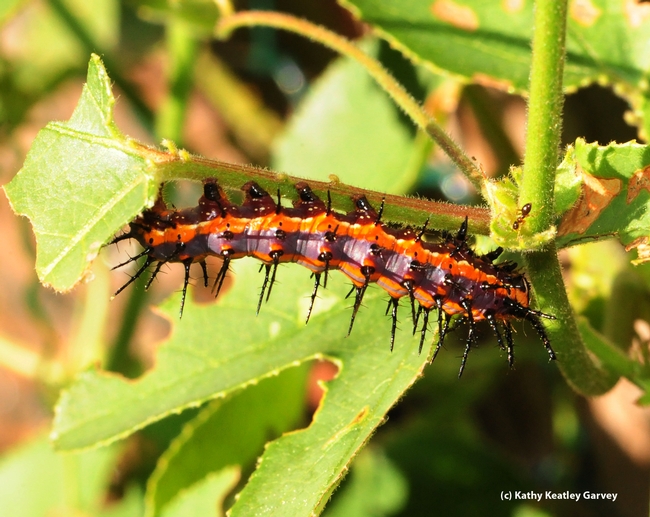
Ant investigates a Gulf Fritillary caterpillar. (Photo by Kathy Keatley Garvey)
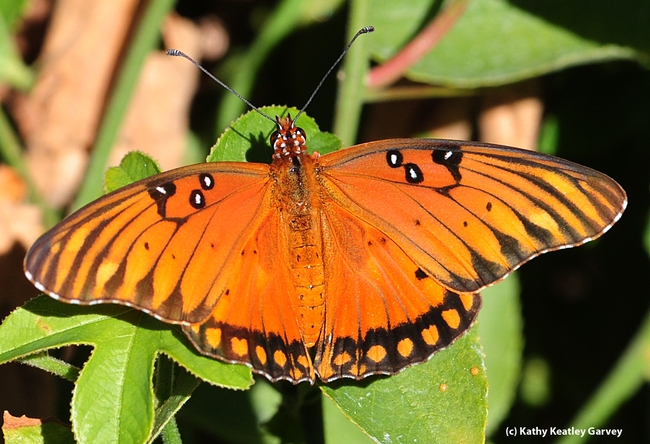
Gulf Fritillary, Agraulis vanillae, spreads its wings. (Photo by Kathy Keatley Garvey)
Pale Striped Flea Beetle in Seedling Alfalfa
In the second week of October, we had a one-to-three trifoliate seedling alfalfa field in Tulare County with plants dying on the north end. The...
Spotlighting Butterflies
If you want to learn about butterflies, "there's an app for that." And a free one, at that. UC Davis graduate student Melissa Whitaker, who is...
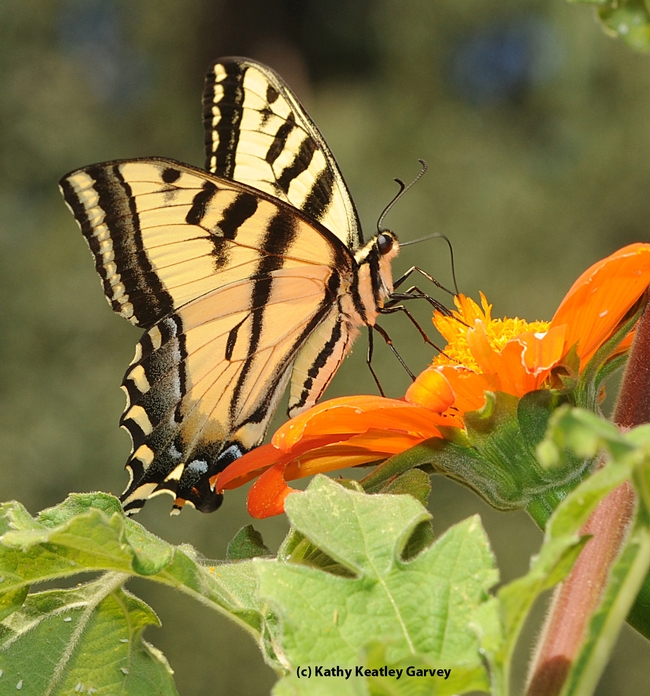
Western tiger swallowtail is one of the butterflies listed in Melissa Whitaker's app. (Photo by Kathy Keatley Garvey)
It's No Vegetarian
Bee specialists like to point out that the yellowjacket is a carnivore and the honey bee is a vegetarian. They are, indeed. The yellowjacket is an...
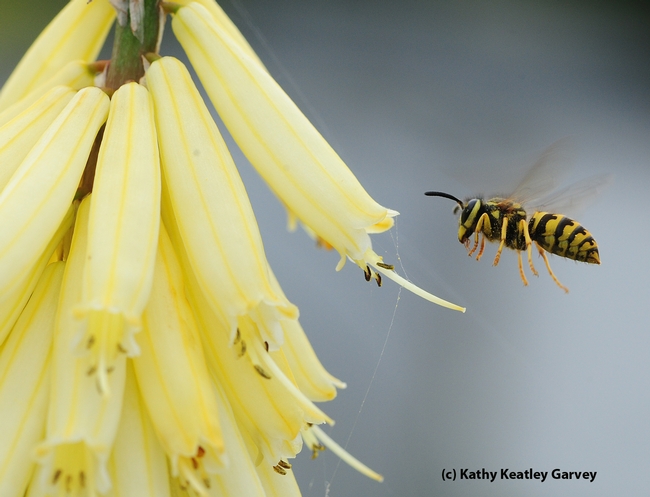
Western yellowjacket (Vespula penyslvanica) heading toward a red-hot poker (but this variety is yellow). (Photo by Kathy Keatley Garvey)
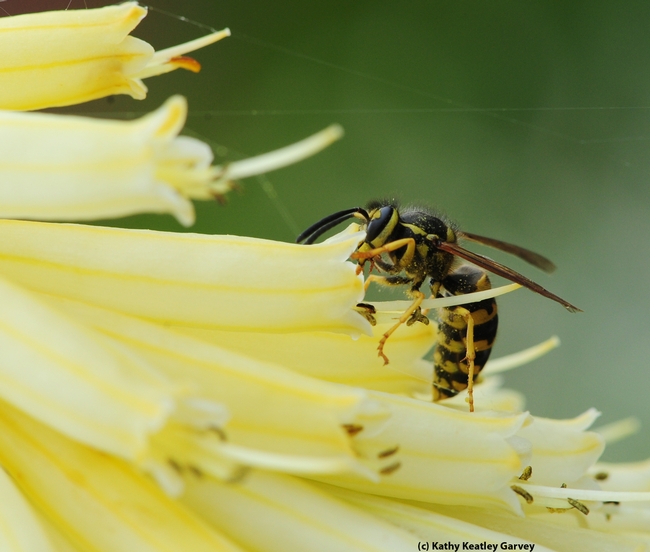
Western yellowjacket buries its head in a tubular flower. (Photo by Kathy Keatley Garvey)
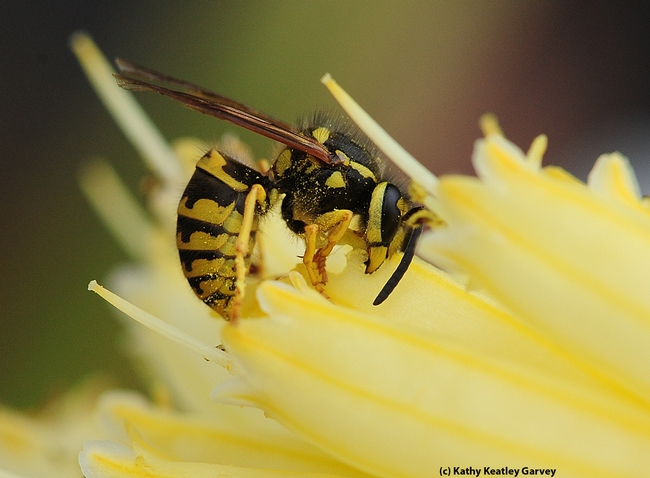
Western yellowjacket foraging. (Photo by Kathy Keatley Garvey)
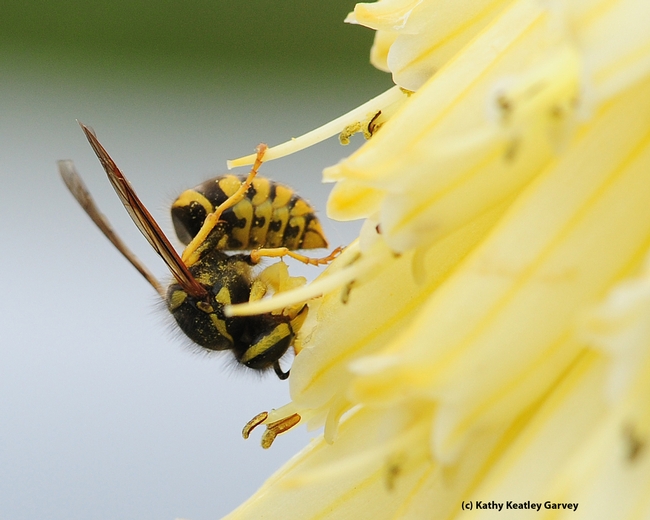
Western yellowjacket assumes the shape of a comma. (Photo by Kathy Keatley Garvey)
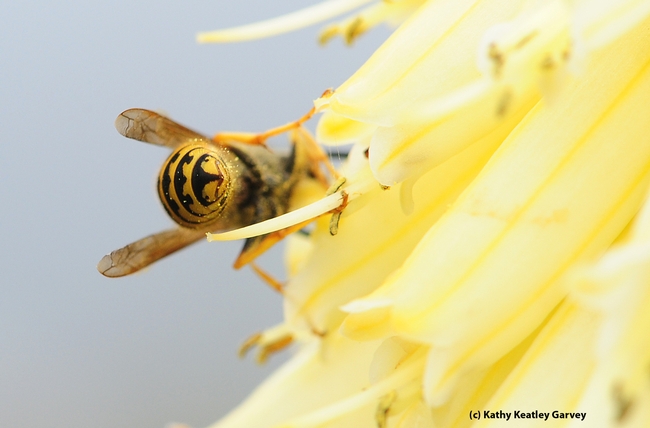
Bottoms up--western yellowjacket moves away from the camera. (Photo by Kathy Keatley Garvey)
Ok, Now What Do I Do?
When we first moved into our “new” home (it was new then) over 20 years ago, it was obvious that something needed to be done about the “back forty”! Not only was the area free of any desirable vegetation, but with the only single-story house in the area, we were living in a goldfish bowl!! We couldn’t see into the neighbors’ homes, but they could sure peer into ours. This was brought to my attention when in the family room – I felt as though someone or something was staring at me. After going through a list of no-no’s not to do in public, I finally went to the large window and looked around – there she was, a small girl of 7 or 8 staring through HER window and into my house; she was watching me!
That was the beginning of the Betsy “hurry-up-and-plant-things around the fences “plan. A lot of thought went into was going to be planted and, of course, what wasn’t allowed on the property. Among the selections were fast growing shrubs such as oleander (Nerium oleander), pomegranate (Punica granatum), various climbing roses, as well as wax privets (Ligustrum japonicum), acceptable landscape plants that were easily found, easily planted, and easily grown. Now the years have past and the little girl was replaced by a teenager who didn’t care what was going on in nearby homes! This is the year that the “jungle without” is going to be tamed.
The wax privets have been pruned to multi-stem standards whose canopies just graze the fence tops on the South side of the house. The original pomegranate still is only giving small fruits which split as they ripen; the newer pomegranates are bending with 6-8 inch diameter fruits which are bright and cheery during this season of brown and yellowing leaves. The oleanders are providing shelter for the multitude of birds which stay in the yard for up to weeks at a time and then head South or where ever to join up with more of their kind. The hawthorn tree (Crataegus cordata) is full of berries, waiting for the birds to come and eat away. The weeds are popping up to thwart my best laid plans to have fewer grass weeds next spring and all in all peace is in the garden!
Back to my original query, anyone out there available to hack a path with me back to those luscious pomegranates? The only way to locate my little dog back there is to watch for the violently waving stems and stalks.
A little more pruning, thinning, and plant removal, and I will have the yard of my dreams (I think!).

